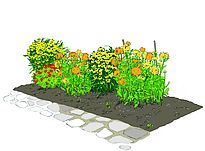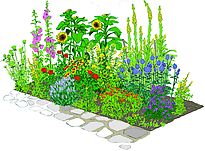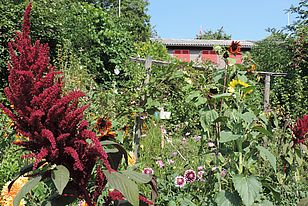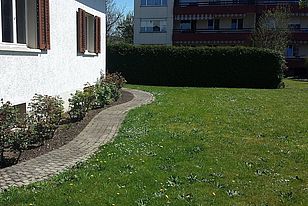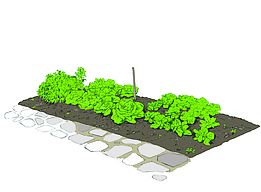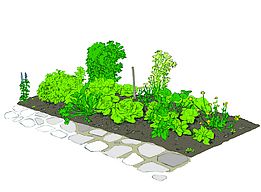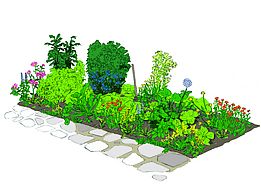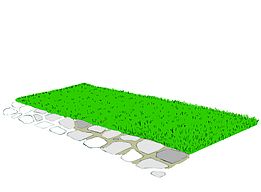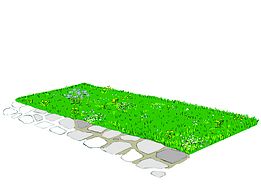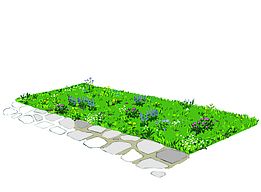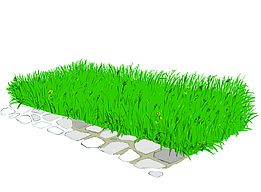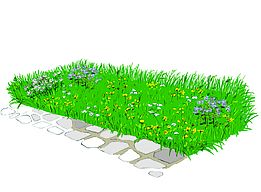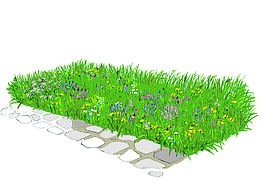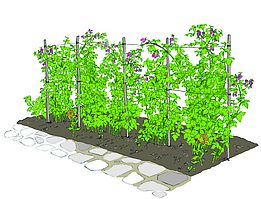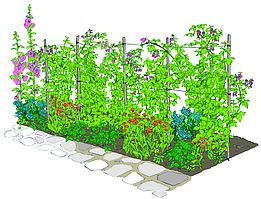16.04.2020 | Beate Kittl | News WSL
A study led by the Swiss Federal Institute for Forest, Snow and Landscape Research (WSL) shows that the more plants grow and bloom in an urban garden, the more restorative the garden is for the gardener. Allotments make an especially important contribution to the health of urban dwellers.
Be honest: which image most closely resembles your garden? Image 1 or Image 3? If it is Image 3, then congratulations! Your natural refuge brings you greater restorative effects, and thus greater health benefits, than less diverse gardens do to those who tend them, as shown by researchers at the Swiss Federal Institute for Forest, Snow and Landscape Research (WSL) and the Forschungsinstitut für biologischen Landbau (FiBL) as part of the BetterGardens study, supported by the Swiss National Science Foundation. Numerous studies have demonstrated that frequently spending time in natural settings – especially in places with high biodiversity – is beneficial to health as it reduces stress, among other things. This, in turn, helps to prevent cardiovascular diseases, for example.
However, in cities where planning is increasingly geared towards densification, more and more green spaces are at risk of being built over. Yet these very spaces are not just beneficial for humans, they are also important habitats and corridors for wild animals and plants. The role played by private urban gardens – i.e. domestic gardens and allotments – in all of this had not been examined thus far. “If urban gardens were found to be good for both people and biodiversity, we’d have a sort of ‘win-win’ situation on our hands,” says WSL sociologist Christopher Young, who conducted the survey with WSL ecologist David Frey.
Allotments come out on top ¶
To find out more, the researchers asked around 300 Zurich gardeners how many species were present in their gardens – with the help of, amongst others, the above illustrations– and how rested they felt after spending time there. Some of the respondents tended allotments, while others tended domestic gardens. The survey revealed that the vast majority of respondents perceived time spent in their gardens to be highly restorative, as the researchers report in the journal Landscape and Urban Planning.
People who tend allotments, in particular, cherish their garden as a place that offers them an escape from everyday life and gives them a chance to switch off. “This is a strong argument for preserving allotments and increasing, rather than reducing, the number of community gardens,” says Young. Moreover, allotment gardeners tend to be older and less socially privileged, and are often in poorer health. “Preserving allotment gardens could therefore also counteract social inequalities in health,” notes Young.
Expanding the availability of gardens ¶
However, 16% of respondents – mostly people with domestic gardens – also stated that their gardens often cause them stress. “A garden can also be a source of stress,” explains Young. This finding suggests that a new, creative approach should be taken to private gardens in spatial planning. For instance, detached houses could be given smaller gardens, allowing more community gardens to be created. Another idea would be for elderly people who find garden maintenance too much for them to entrust the care of their gardens to leisure gardeners rather than professionals, thus creating neighbourhood networks at the same time.
The researchers also found that biodiversity has a positive, albeit minor, impact on restoration. Town and city authorities could therefore kill two birds with one stone through such steps as providing citizens with recommendations, courses or seeds in a bid to enhance biodiversity in urban gardens.
And of course, these measures would be of tremendous benefit to the natural environment too: “Urban gardens often feature a large variety of plants in compact spaces. Diverse gardens provide food and shelter for many animals, which has a positive impact on the urban ecosystem,” says Frey. He demonstrated this link in an earlier study. So in addition to its restorative value, plant diversity has a host of other positive effects: it helps pollinating insects and other useful insects and enhances soil quality, leading Frey to conclude that “urban gardens should be an integral part of the green infrastructure of towns and cities”.
More illustrations from the survey about garden biodiversity: ¶
Vegetable patch ¶
Lawn ¶
Meadow ¶
Berries ¶
Contact ¶
Project ¶
Publications ¶
Copyright ¶
WSL und SLF stellen Bildmaterial zur Bebilderung von Presseartikeln im Zusammenhang mit dieser Medienmitteilung kostenfrei zur Verfügung. Eine Übernahme der Bilder in Bilddatenbanken und ein Verkauf der Bilder durch Dritte sind nicht gestattet.
